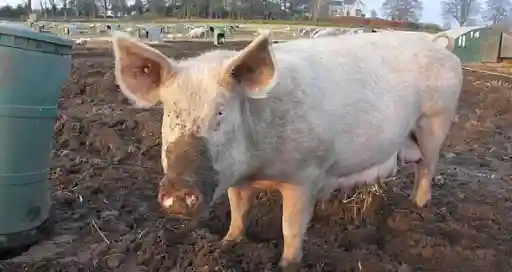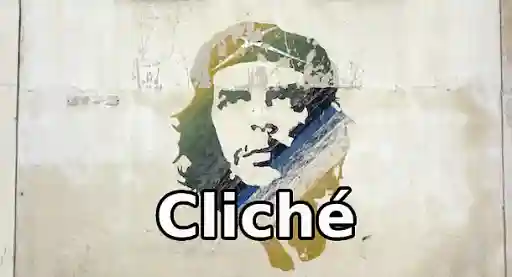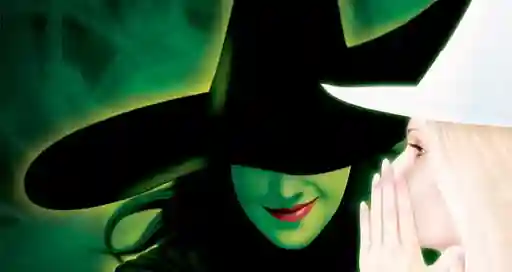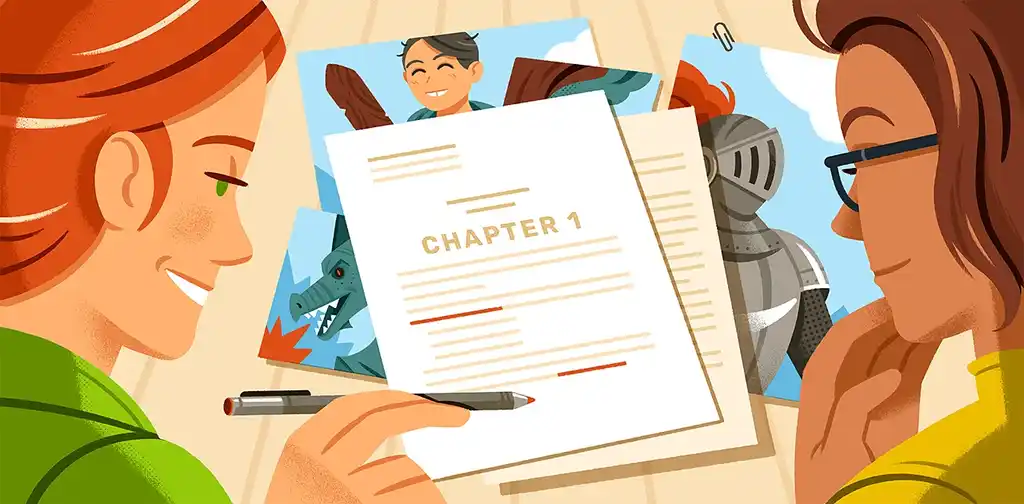Writing a children’s book might seem simple on paper, but in practice, it’s no walk in the park. Crafting a story that children and grown-ups alike will enjoy requires a lot of careful thought, research, and planning. We’re here to walk you through the process step-by-step — and by the end of this post, getting started on a kid’s book of your own will feel like child’s play.
1. Understand the children’s book market
Before you set sail on your children’s lit adventure, you’ll need to understand the choppy waters you’ll be navigating. Kids grow up fast, so children’s books are typically divided into categories by age. Readers and publishers will have different expectations with regard to word count, vocabulary level, and content complexity for each age group.
In the US, there aren’t any specific, nationally recognized classifications that children’s books have to fall into, but most outlets follow similar industry standards for categorization. Children's sections are typically organized by age ranges like "Ages 0-3," "Ages 3-7," and "Ages 8-12".
But think of these age ranges as more of a loose guide than a rigid requirement. Some children will pick up reading faster than others, while others may enjoy stories typically aimed at older or younger readers.
Children’s books also occupy a unique space in the publishing industry because your target audience is obviously children, but they won’t actually be buying your book themselves — so you also need to appeal to their parents, teachers, librarians, etc.
To get an idea of what works, research popular books in your target demographic and consider what makes them stand out to children and adults alike. We’ll go through the key age groups you need to know, and give an example of a successful children’s book targeting each one.
🌚 Board books (ages 0-3)
The name of the game with board books is simplicity — baby’s first book should be basic, interactive, and visually interesting. Since they’re designed for the youngest story-lovers among us, these books are typically printed on more durable materials like cardboard (hence “board”) that can survive an occasional chewing.
Board books don’t typically adhere to a defined story structure. Instead, they focus on developing children’s pattern recognition skills and introducing basic concepts like colors, shapes, numbers, and everyday objects through repetition and charming visuals.
Goodnight Moon is an example of a classic board book. Cute imagery, vibrant colors, and simple language with an engaging rhyme scheme makes the story flow naturally from page to page — perfect for cozy bedtime reading.
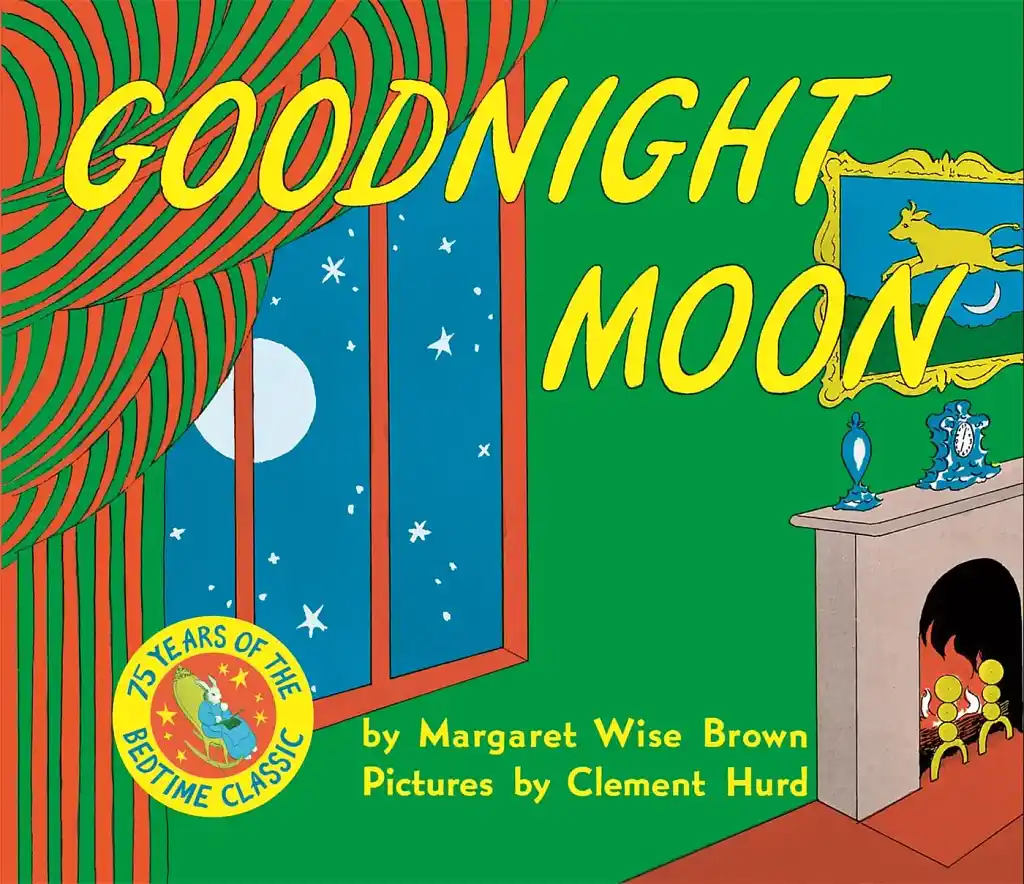
👑 Picture books (ages 3-7)
They say that a picture is worth a thousand words, which is great when your target demographic doesn’t know many more than that! Picture books are exactly what they say on the label: like board books, they lean heavily on illustrations, but they have a higher word count — usually around 500 words — and more of a defined narrative.
Take Maurice Sendak’s Where the Wild Things Are. The focus remains squarely on the illustrations, but unlike Goodnight Moon, Where the Wild Things Are contains a full narrative arc — the story starts with a conflict over Max’s misbehavior, then turns into his adventure to “where the wild things are”, followed by the dramatic climax in which Max becomes the king of the wild things… and ultimately, the resolution when Max decides to return home.
🐸 Early readers (ages 5-8)
While both board and picture books are designed for an adult to read aloud to their child, early reader books are designed to be read independently. The bulk of the storytelling is done by the text, while the illustrations convey information that isn’t explicitly spelled out.
While the language should remain simple and approachable, you can start experimenting with slightly more advanced sentence structure and word choices. Your aim should be to challenge young readers so that they feel a sense of accomplishment for understanding your book — but it shouldn’t be so advanced that you discourage them.
One way to ease early readers into more text-based books is through short story collections like Frog and Toad Are Friends. The book is broken up into five distinct stories with clear messages and themes, as well as endearing illustrations of Frog and Toad to engage more visually inclined readers.
🕸️ Middle grade (ages 8-12)
By middle grade, young readers have left the nest and are well into the swing of independent reading. Sometimes referred to as “chapter books”, these stories are much longer and more complex than books for early readers. They’re designed to be read over multiple sessions, featuring varied sentence structure, more sophisticated vocabulary, and very few (if any) illustrations.
Stories targeting this demographic can explore more nuanced concepts, as characters face meaningful challenges that incur personal growth and self-discovery. In Charlotte’s Web, for example, piglet protagonist Wilbur develops into a mature pig as he comes to understand friendship, mortality, and loss. The story doesn't shy away from difficult topics, but they’re presented in an age-appropriate manner that respects children's emotional intelligence.
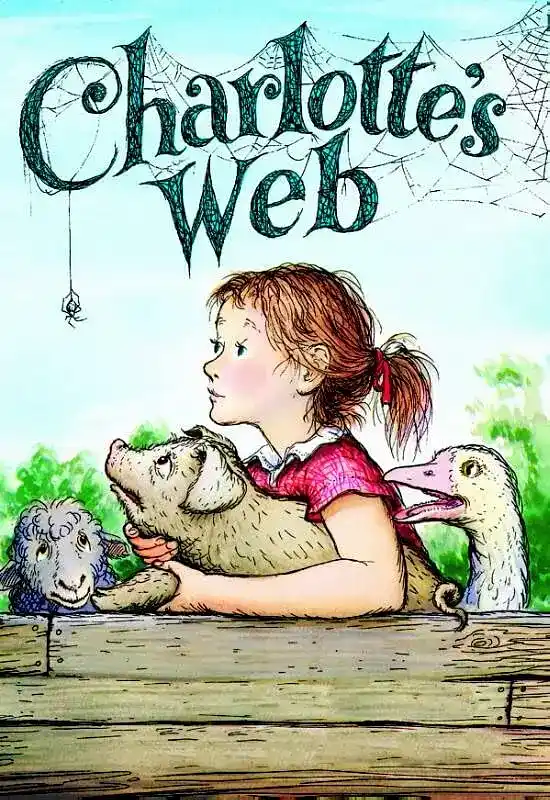
2. Generate a unique, engaging story idea
Once you’ve decided whom you’re going to be writing for, it’s time to decide what you’ll be writing. Generating story ideas can be difficult at the best of times, and deciding on a pitch for a children’s book comes with its own set of challenges. This process will obviously vary depending on your target demographic — a middle grade novel like Charlotte’s Web will require a much more detailed plan than a board book like Goodnight Moon.
The main thing to consider is your central lesson or theme: the younger your target audience, the clearer your message should be. It could be something simple like the value of sharing (as in That’s Not Mine), or you could tackle a heavier concept like the loss of a loved one, à la A Leaf Called Greaf. Whatever “level” of children’s book you’re writing, this message will give you a solid foundation on which to build the rest of your book.
💭 Think back to your own childhood
If you’re struggling to think of a core message, try returning to your own childhood — do any memories stand out that you could use to form a relatable story?
If nothing comes to mind, start with a universal childhood experience, like losing a precious toy, then brainstorm for some extra elements to give it your own unique spin. In this case, maybe you could write a whimsical tale about a teddy bear embarking on a grand adventure to find its way home — an ultimately uplifting message to put young minds at ease.
Or if you’re looking to write a more advanced middle grade story, it might help to think back to your own favorite books around that age. Did you love zany adventures from Roald Dahl, moving classics like The Giver and Bridge to Terabithia, or modern fantasy series like Percy Jackson? MG books tend to be more distinct in genre and more serious in theme; figuring out “who you want to write like” can help you narrow down these elements for yourself.
3. Create relatable characters that kids will love
As kids are finding their way in the world, they look to role models like parents, teachers, and yes, fictional characters to guide them. With that in mind, you should aim to create a likeable protagonist that children can both admire and relate to for your children's book.
Fortunately, the process of making a character that kids will find endearing is much the same as it is for adults, just simplified. First off: establish their wants and needs. These will likely go hand-in-hand with the central theme or message of your book — e.g., if your story is titled “Susie’s First Day at School”, Susie’s aim might be to make a new friend.
Next, give them a personality flaw. Since you might not have many words to work with, it’s best to start with something simple — you should be able to address any weaknesses within a short period of time. Perhaps young Susie gets nervous around new people; even though she wants to talk to her classmates, she can’t quite find the courage.
⚖️ Strike the right balance of “good” and “bad” traits
The best approach to creating children’s characters is to balance out their flaws with some positive qualities that kids can admire and internalize.
Susie might be apprehensive at first, but she eventually works up the courage to compliment a classmate on their drawing, and they become fast friends. In this way, Susie’s kindness helps her overcome her fear, and she’s rewarded for her efforts with the new friend she was looking for.
🧸 Develop a memorable character design
If you’re writing a picture book, consider how your character’s physical appearance will translate to illustrations. Create a distinctive character design by giving them unique features, a memorable color scheme, and a recognizable silhouette.
Winnie the Pooh has become such an iconic children’s character in large part thanks to his endearing design. His simple yellow color contrasts nicely with his bright red shirt, and the round shapes that make up his body exude a friendly, approachable energy that kids can’t help but love.
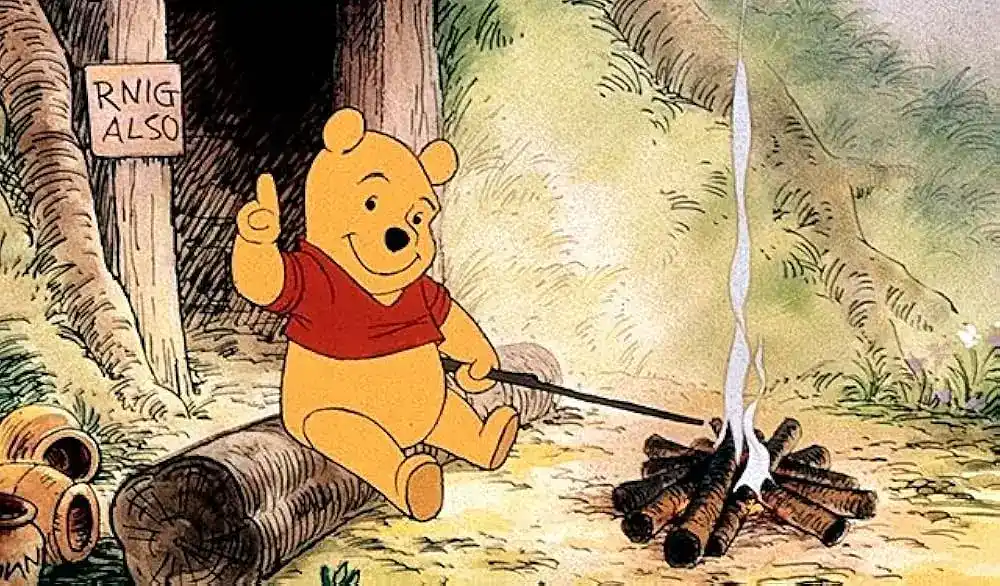
Winnie the Pooh… Winnie the Pooh … Image: Buena Vista
4. Give your plot a clear beginning, middle, and end
There’s no need to get bogged down in the complexities of saving the cat or scaling Freytag’s pyramid in your children’s book, but you will still need a simple story structure if you want to retain kids’ interest.
At the very least, you’ll need to have these basic plot beats:
- Introduction: establish your (relatable) main character and their everyday norm.
- The middle: set up a problem that your character has to overcome, like making a new friend or learning how to share.
- Development: show your character trying (and often failing, at first) to solve the problem.
- Climax: this is where your character overcomes their biggest challenge
- Resolution: resolve the story with a satisfying conclusion that shows growth, change, or a lesson learned.
🐇 Children’s book beat breakdown: Peter Rabbit
Let's apply this framework to a staple of countless childhoods — Beatrix Potter's The Tale of Peter Rabbit.
We start by meeting Peter, an impulsive young rabbit living with his mother and sisters. Danger strikes when Peter ignores his mother's warning about Mr. McGregor's garden and sneaks in for his fill of delicious vegetables. After being spotted, our herbivorous hero attempts a desperate escape — losing his clothes in the process.
In the climax, Peter narrowly evades Mr. McGregor and his watchful cat before returning home. Sick, sorry, and exhausted, Peter gets tucked him into bed with some chamomile tea, while his well-behaved siblings enjoy a feast of bread, milk, and blackberries.
In the case of Peter Rabbit, the lesson is clear: bad behavior catches up to you eventually, and being good and patient has its rewards. A child should be able to give you a similarly basic summary of your story by the end. If they can’t understand the central message or lesson you’re trying to convey, you might need to rethink your narrative.
5. Master a “kid friendly” writing style
The language you use to communicate with children might be simple, but getting across your desired message with the right tone is anything but. Kids are a lot smarter than us adults often give them credit for — they can tell when they’re being talked down to. Still, you do need to simplify your language to make it digestible; the degree just depends on the target demographic.
Board and picture books, for example, tend to have a rhythmic flow with a lot of repetition to foster pattern recognition skills. Think of Dr. Seuss: he was a master at using rhythm and repetition to make a story engaging and memorable. If you read Oh, the Places You’ll Go! as a child, there’s a good chance that the line following “You’re off to great places!” is still etched somewhere deep in your brain.
In a similar vein, try using familiar vocabulary to introduce new words with context clues: "the enormous elephant couldn't fit through the door." In this case, a bit of alliteration — “enormous elephant” — also helps the prose stick in a child’s head!
You can start to use more advanced language and grammar choices in early reader and middle-grade books with an eye towards improving vocabulary. Accessibility should still be a priority, but you can begin introducing more abstract concepts and sophisticated themes to keep older readers intrigued.
6. Balance text with illustrations
Pictures and words in a children’s book go together like green eggs and ham. Illustrations can help fill the gaps while kids are learning to understand stories purely through text, and give your story a distinct visual flair.
For younger children, emotions and atmosphere are much easier to understand when they’re conveyed visually. Your illustrations shouldn’t just be simple sketches of the words on the page — they should complement your text to extend your narrative. Kids have active imaginations, so give them some room to imagine!
📦 Think “outside the box” with element placement
Don’t be afraid to get creative with the placement of your text and illustrations. Consider making the text part of the illustration itself; maybe your words follow the path of a flowing river, or climb up a mountain alongside your character.
Of course, you don’t want to get too creative — remember that an adult is going to read your book aloud to a child, so text placement should allow a grown-up to hold the book open and visible to a child while still being able to read the words. But as long as the text is somewhere on the page — and not flipping upside down too often (though occasionally is okay!) — you should be fine.
🐦 Visual balance in Don’t Let the Pigeon Drive the Bus!
In Don't Let the Pigeon Drive the Bus!, children's author Mo Willems playfully balances text and illustrations to create visual intrigue. Speech bubbles vary in size, capitalization, and typography depending on the pigeon's emotional state, allowing children to "hear" the pigeon's changing tone without it being explicitly stated.
The reader is addressed directly to encourage children to interact with the text: "Can I drive the bus?" "No! You can't drive the bus!" Dialogue bubbles move dynamically around the page while maintaining readability, allowing adults to comfortably read aloud while children appreciate the pigeon’s hilarious hijinks.
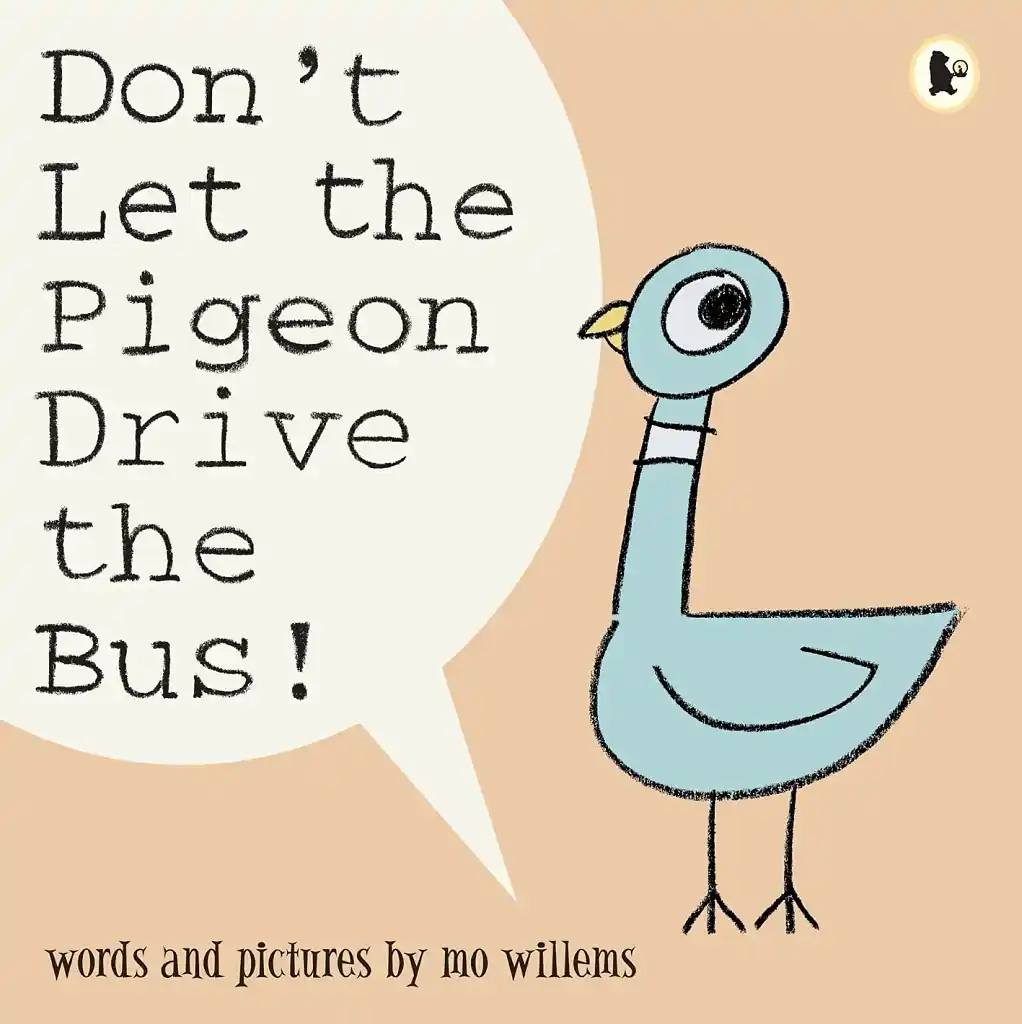 If you’re not confident in your visual design skills, consider working with a professional illustrator. It may cost you a pretty penny, but the value of visual design in a children’s book cannot be understated — and the boost it’ll give your marketability will make it well worth it in the long term. You can create a basic storyboard to help you visualize how your text and images will work together, and help get your ideas across to your illustrator.
If you’re not confident in your visual design skills, consider working with a professional illustrator. It may cost you a pretty penny, but the value of visual design in a children’s book cannot be understated — and the boost it’ll give your marketability will make it well worth it in the long term. You can create a basic storyboard to help you visualize how your text and images will work together, and help get your ideas across to your illustrator.
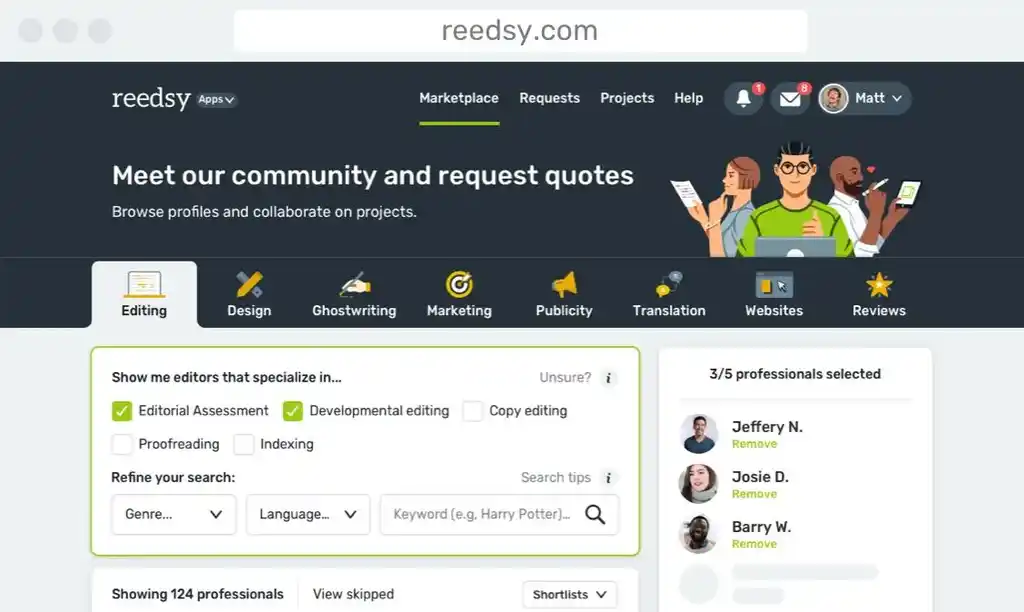
Looking to publish a book?
Meet vetted professionals who can help you turn your book idea into a reality.
7. Edit and refine your manuscript
Once your initial manuscript has finally been drafted, it’s time to get editing! Most kid’s books are going to be read by an adult, so try reading it aloud yourself to catch any awkward phrasing or rhythm issues. Simplicity is king; remove unnecessary adverbs and adjectives, as well as any other words that might be too advanced for your target demographic.
Dialogue should feel true to how children actually talk, and the point of view should stay consistent to avoid any needless confusion. Hiring a developmental editor will go a long way here — sometimes a second pair of eyes will catch things that you missed on the first go-around, and no eyes are better than a seasoned professional.
When it comes to pre-publishing testing, the more the merrier! Once you and your editor are happy with your first draft, try testing it with a few parents and children in your target age range. After all, who better to check whether kids and grown-ups will love your story than actual kids and grown-ups? Once you’ve taken aboard their feedback and made any necessary adjustments, you can start the publishing process.
All that being said — the most important thing you can do when writing a children’s book is embrace your inner child. Let your imagination run free, and craft a charming story that will resonate with kids and adults alike.
About the author

Nick Bailey writes about anything and everything in the realm of writing and publishing. From articles on honing your craft to launching your book, Nick aims to provide valuable insights and practical tips to the Litreactor community in his posts. Aside from books, Nick enjoys hiking, electronic music, and filling up his personal cookbook with new recipes.



